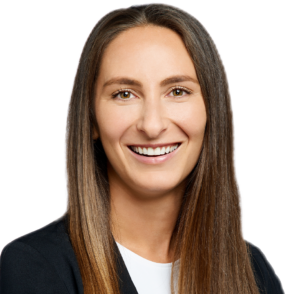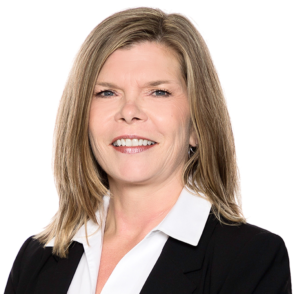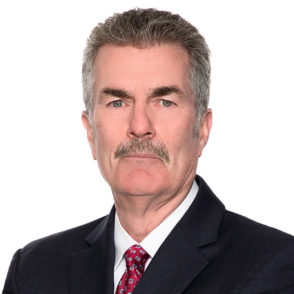As we enter the long-awaited season of Spring which conjures up thoughts of new beginnings, I draw parallels to the Excess & Surplus (E&S) Insurance industry. Several years of disciplined underwriting, including increased rates, adjusted limit deployment, and careful tweaking of policy language, coupled with a tamping of COVID-19 restrictions is resulting in this renewed sense of optimism. Carriers are reporting Q1 results with powerhouse Travelers’ reporting before its peers a 39% increase in profit over the same period last year. We consider this a proxy for others as they blend commercial and personal lines across many diverse classes of business predominantly generated in North America.
While many insurers loss ratios are improving the last few years following decades of triple digit unacceptable results, this market cycle, unlike others in recent memory, appears to have staying power. Many dynamics need to be considered beyond high level premium and loss reporting of insurers to fully understand the underlying drivers as to why we see this continuation:
- Claims beyond natural catastrophes and anything pandemic related have been predominantly stalled as courts are only now starting to reopen. The backlog of built-up litigation will no doubt have a sharp impact on the industry, which is difficult, if not impossible to forecast.
- Skyrocketing labor rates, material costs, healthcare costs and overall economic inflation will continue to drive sharp increases in loss cost trends.
- Regardless of the line of business, the underlying exposure basis used in rating policies has been generally depressed the last two years due to the pandemic. As various civil authority and government restrictions begin to wane and the population begins to return to some semblance of normal activity, exposures will increase, as will losses.
- Global socioeconomic risk factors have worsened since our last report as have concerns surrounding an economic recession. Both risks create an environment whereby insurers are proactively positioning themselves to withstand such headwinds. Simply translated, while rates may not be increasing at the same level we experienced in 2020 and 2021, they are still increasing.
- Selective deployment of capital in the form of policy limits in exchange for premium, has arguably never been greater. Major carriers are exiting complete lines of business while others are looking to thread the needle and avoid certain classes, lines, geographies, or perils. Such actions continue to push more business from admitted markets to the E&S and Specialty marketplace.
- Despite new capital continuing to enter the marketplace, which generally reduces rate, the voids created by long term participants reconsidering their product offerings has not had such an impact.
- Not all carriers are created equal, whether you look at service standards, appetite, or rating, as well as both short- and long-term objectives. No truer is this statement than in the massive changes taking place in the Personal Lines and Property markets in the Gulf coast and Southeast states. Governor DeSantis recently issued a proclamation calling the state legislature back for a special session in May to “address the states troubled insurance market.”
- Rating agencies are doing their part acting as watchdogs with organizations such as Demotech taking appropriate actions with the likes of Fed National while A.M. Best has placed carriers “under review.” The underlying credit worthiness and size of the Insurer you consider have never been more important as we see increases in both frequency and severity of claims.
RATE
As previously reported, a broad position on the topic is not possible as so many factors require consideration. Line of business, location of risk, loss history, insured commitment to risk mitigation, changes in exposure and incumbency will be applied. Generally speaking, insureds need to assist us in developing distinguishing factors that separate them from the pack and deem them more desirable. One means of such a result is preparation of thorough submissions with detailed content answering any and all questions—leaving nothing to speculation.
While non-CAT property, loss free liability and accounts with a strong tenure of performance will enjoy preferred benefits, they too are not immune from rate increases. Business Insurance recently reported that Q1 commercial composite insurance rate was 6% compared with 5.8% for the final quarter of 2021. They further reported that small and medium size enterprises enjoyed a more favorable rate environment than large or jumbo insureds.
Notwithstanding the foregoing, certain segments or classes remain extremely challenging, including Transportation, Habitational and Construction. From a line of business (LOB) view, Cyber and Property lead the parade with the most significant rate increases.
Capacity tightened for many Carriers on the ever-important April 1 reinsurance renewals but remained “manageable” as recently reported by a leading industry news provider. It was further reported that a wide range of rates were evident in Property CAT renewals based primarily on loss experience and overall profile of the cedent, however rates were in line with that of last quarter as reported January 1st. Does this signal stabilization in Property CAT reinsurance rates? Only time will tell as we gear up for the June 1st unofficial start of CAT season.
CAPACITY
In general, capacity is not an issue with sufficient capital available to deploy aggregate or limits as needed. As discussed throughout this report, it is important to underscore the extremely selective nature of Insurers who are demanding quality submissions with thorough details allowing them to prudently quote opportunities. As previously reported in this publication, only clients securing market capacity need be concerned as total available limits may be less than previously enjoyed. However, let there be no mistake, Insurers will decline unfavorable risks reserving their capacity for better quality opportunities.
We delve into the broad categories of capacity relative to Casualty, Property and Professional as follows:
- Willis Towers Watson advised that casualty remains plentiful with aggregate capacity increasing sharply as compared to early 2020. Legacy carriers are again utilizing more of their available capacity on excess layers for clients buying substantial limits.
- Property capacity remains generally intact with Carriers aggressively underwriting to stricter standards surrounding valuations that are based on current modeling and data to support accuracy. As use of third-party underwriting data and technology continues to ramp up, Carriers are becoming increasingly selective on deployment of aggregate based on geography, occupancy, protection, and construction of the assets. This holds true within both commercial and personal lines with only the best risks favored.
- The many various lines of business that comprise the broad category of Professional Liability generally have sufficient capacity. Each line of business has unique nuances requiring deeper analysis to comment on capacity more acutely. Suffice it to say, Cyber Liability, public entity D&O and Employment Practices Liability are among the most challenging lines of business with capacity reserved for best-in-class insureds who demonstrate a commitment to sound risk management standards.
TERMS & CONDITIONS (T&C)
- Carriers continue to tighten terms and conditions in an aim to further insulate balance sheet volatility. Liability policies are experiencing exclusions or in some instances sub-limits to manage what they consider extreme exposures such as claims arising from wildfires, sexual misconduct/molestation, assault & battery, communicable disease, PFAS (per-and polyfluoroalkyl substances), and more. First party policies such as Property are attempting to restrict coverage based on building materials used such as Exterior Insulation Finishing System (EIFS).
- Coinsurance clauses require special attention, particularly on Property policies as recent economic and supply chain issues as discussed elsewhere in this report are significantly impacting valuations. The standard of applying historical industry accepted factors to trend with inflation are no longer valid due to a “white-hot” personal real estate market and a commercial real estate industry that is poised with a positive outlook as recently stated by J.P. Morgan. Exacerbating these real estate market conditions are increased reconstruction costs resulting in close scrutiny to ensure proper valuation.
- Various deductibles can apply on any given policy based on the triggering event or peril, often times with many deductibles to be considered based on underlying circumstances. For example, convective storm deductibles may now apply in any given state when it did not previously.
NEW MARKET ENTRANTS
Startups / Expanded Appetite:
While we have not seen the flurry of new market entrants’ year to date as we have the last few years, that is not to say that new capacity is stagnant, quite the contrary. Carriers such as Hartford are eagerly pursuing a larger portion of the non-admitted marketplace as are peers such as Chubb, Liberty Mutual and Travelers to name a few.
Further, development of new hybrid style InsurTech – MGA/MGU platforms continue to evolve at a fast pace. In many instances, these organizations heretofore have been relatively unknown, however they are becoming more prevalent in making a name for themselves and inroads into the specialty marketplace. Additionally, use of parametric solutions to fulfill balance sheet protection of insureds is becoming more common and, in our opinion, will increase as the industry becomes more familiar and comfortable with this relatively new form of risk transfer.
Contributor: Paul G. Smith, Corporate Senior Vice President, Carrier Relations, H.W. Kaufman Group
Q1 2022 OVERVIEW & Q2 FORECAST (US)
Our industry leading subject matter experts dissected the marketplace and provided insights on the Burns & Wilcox P&C Market Outlook: Q2 2022 webinar, hosted April 13, 2022.
Inflationary pressures across all markets and the forthcoming catastrophic storm season are two areas of concern. Both could limit new policy growth and keep rates elevated. Underwriters will remain highly selective in most areas, ensuring that only thorough submissions that include statistical data and contextual details will be considered in such a competitive market.
Some carriers are exiting the Personal Insurance, Healthcare and Transportation markets. Other carriers in the London market and elsewhere are picking up the slack by providing capacity. Pandemic-related challenges like deferred care and staffing in healthcare have rebounded, while modeling technologies in Personal Insurance and telematics in Transportation provide broker partners with the data needed to help carriers remain in a position to pay claims.
As always Burns & Wilcox is prepared and ready to support its broker partners with domestic and international capacity reserved for its clients.
Below, our experts provide further guidance, delving deeper into specific areas with advice and outlook.
Personal Insurance:
Market dynamics occur on an ongoing and regular basis within the Personal Insurance space, but one of the biggest news items last quarter was that Lexington Insurance Company announced their decision to discontinue their Personal Lines Non-Admitted Program business. This is the latest in a series of blunt reminders of the hard market that is prevalent in the Personal Insurance space.
The Burns & Wilcox Personal Insurance Practice Group continues to deliver market access and expertise to our partner agents and brokers. We just concluded a series of positive meetings with our London markets and will maintain a high level of property capacity. This is a result of our strong underwriting results, recognized reputation and long-standing partnerships in the Lloyd’s marketplace.
In addition, partnering with our sister company, Atain Specialty Insurance, an A.M. Best Rated “A” IX company, other domestic carriers, and our London Syndicates, we will continue to provide innovative solutions and exclusive programs for our retail agents.
Unfortunately, catastrophic events do not appear to be slowing down. There were 20 multi-billion-dollar CAT events in 2021, and models are predicting an even higher number in 2022. Not only are the number of events increasing, but so is the severity of damage—especially from wildfires and hurricanes. Wildfires last longer, cover more acreage and are happening in more states than ever before. Tornadoes and related convective storms have traditionally been an issue for the midwestern U.S. and the Plains, however they are happening more frequently in the South and Northeast.
When insurance carriers determine adequate rate and terms for handling these events, you see two categories emerge—primary and secondary perils. Primary perils, like hurricanes, are well modeled and more understood. Secondary perils, like flooding and wildfire, do not have as sophisticated modeling, making it more difficult to predict and set accurate rates.
Even well modeled events like hurricanes can be erratic. Hurricane Ida caused extensive inland damage in August and September 2021, long after it had left the Gulf of Mexico. Normally hurricanes dissipate quickly once they make first contact with land, but Ida proved to be an outlier that could become the norm.
When looking at Demotech rated insurers, the unpredictable nature of Hurricane Ida was really the straw that broke many of these organizations’ backs. In the coastal market, the long-term objective is to collect enough premium in non-CAT loss years to offset CAT loss years. Over time however, coastal markets became inundated with insurers singularly rated by Demotech, many of which offered premiums that were underpriced, giving them an unfavorable attritional loss even before hurricane activity rolled in. With the increasing number of CAT events over the last few years, many of these carriers are now insolvent.
Burns & Wilcox and its carrier partners, however, share the same goal of long-term viability and success. Our Personal Insurance Practice Group works only with carriers that have financial stability as determined by rating agencies such as A.M. Best, and we have developed procedures to ensure markets remain profitable even in the face of many challenges.
Labor shortages, material shortages and inflationary pressures are also impacting the market, especially in the area of reconstruction costs. Steel prices are up 28 percent, lumber up 84 percent and plywood has risen by 130 percent since the pandemic, meaning insureds are at a higher risk of being underinsured and carriers are paying out more on average for each claim. This is causing carriers to be more demanding with the minimum value of insurance they will write. Insured to value is almost as important as rate today. Even in this tough environment however, Burns & Wilcox can help insure all properties up to 100 percent replacement cost as determined by accredited inspection vendors.
As we look to the remainder of the second quarter, rates, while they will remain high, will start to stabilize. Terms will also remain tight, however they too should start to stabilize.
Contributor: Bill Gatewood, Corporate Senior Vice President, National Personal Insurance Practice Leader, Burns & Wilcox, Detroit/Farmington Hills, Michigan
Commercial P&C Insurance:
We continue to see rate increases and tightening of capacity in Commercial lines. In conjunction with rate increases, markets continue to push more restrictive terms and conditions and are even willing to walk away if not agreed. As Insurers remain selective in accepting risks through diligent underwriting, there is no better time to engage one of our specialist brokers with deep relationships and expertise allowing them to secure the best terms and conditions possible for our retail partners.
Property:
Despite adequate capacity in the marketplace, market appetite is limited in certain occupancy classes, geographies and in some instances for specific perils—such as wind and wildfire.
Older properties tend to be more difficult to place when there is no updated construction modifications or protection as demonstrated through current inspection reports. Clients can assist us through preparation of thorough submissions, leaving no questions unanswered, and including as much detailed content as possible. This will further assist in establishing a proper valuation to ensure quotes accurately reflect the exposure.
Our experience since January 1st has resulted in single-digit rate increases to flat in the $1B TIV and over schedules. We have also experienced the return of standard or direct markets and an aggressive stance by London on mega deals. However, we are still seeing large single to double digits rate increases in the middle to smaller market segment.
Casualty:
Both Primary and Umbrella/Excess are heavily dependent upon the class of business and jurisdiction of exposure. Rates are moderating following the compounding effect over the last several years with our Carrier partners continuing to carefully underwrite each account. The continuation of shorter limits, greater ventilation of layers and laser tight terms and conditions are several examples of Carriers managing their exposures.
As courts begin to reopen following pandemic shutdowns, third party litigation funding becomes more prevalent and sympathetic jurors award exorbitant verdicts, this area of marketplace will remain quite guarded.
Contributor: Denis Brady, President, Burns & Wilcox Brokerage, San Francisco, California
Professional Liability (Healthcare):
The Healthcare industry represents 20 percent of the GDP in the U.S. As the industry has grown, categories of healthcare coverage have emerged to include everything from hospital and physician and medical group liability to outpatient centers, facility risks, technology and telehealth and more. The COVID pandemic increased industry liabilities, especially with many patients having to cancel elective surgeries, causing the phenomenon of deferred care.
Staff shortages stretched resources even further, making basic healthcare delivery difficult, endangering the long-term health of Americans. Many rural hospitals and medical centers went bankrupt or closed because they did not have the volume or cash in reserve to survive. Nearly 20 alone closed in 2020 and more were expected in 2021 according to a July 2021 report on CNN.com.
While the prevalence of serious diseases like cancer increased over the last two years, wellness visits and physicals are returning to their pre-pandemic levels. Healthcare organizations are in a better position to navigate their PPE needs, stabilizing risks. Still, some national carriers are exiting the market because of challenges to tort reform, the ongoing rise in severity of medical malpractice lawsuits and what some deem as inadequate rate. Carriers who remain in the market have become much more selective on risk tolerance and pulled back on coverage terms and limits.
The industry still requires capacity in lines of business such as Professional Liability, D&O, EPLI and Cyber insurance. Additional coverage is available in managed care, regulatory billing, environmental and standalone sexual misconduct. Cyber liability in particular requires a high level of brokering while meeting stringent underwriting requirements, given then importance of multifactor authentication and end point detection. Both are examples of how quickly technology is evolving the cyber sector.
Rate increases continue in healthcare but are slowing in areas like Medical Malpractice, where increases are relatively low this year. D&O has seen rate increases of 10-50 percent but more capacity entering the market will temper this. The good news is that insureds and prospects are better prepared for the placement process and coverage adjustments. Additionally, niche healthcare coverages have evolved and the various products can be packaged together for qualifying clients.
With such ongoing concerns as opioid class action suits and Blue Cross Antitrust, multi-district litigation, the need to rely on true subject matter experts for solutions has never been more critical. Medical care utilization, reimbursement changes and staffing concerns are complicating markets further with industry churn (and pandemic factors) causing healthcare mergers and acquisitions to increase by 56 percent in 2021 compared to 2020.
Burns & Wilcox professionals can discuss with partner brokers what their clients are prepared to spend for coverage, and identify robust, customized options. We are prepared to deliver quotes, provide coverage comparisons, and available endorsements to assist clients understand their choices. It is also important to have robust renewal strategies in place to prevent loss of coverage or periods of underinsurance well before the policy expiration date arrives.
Contributor: Karl Olson, Vice President, Professional & Management Liability Practice Leader, Burns & Wilcox Brokerage, San Francisco, California
Transportation Insurance:
Transportation has been in a decade-long hard market with no end in sight as Auto liability rates continue to increase. Some carriers are completely avoiding specific states and metropolitan markets where risks are higher. As a result, standards that underwriters are establishing are becoming stricter each year while the universe of accounts that qualifies for standard markets is shrinking.
The E&S marketplace is staying busy while the gap between preferred and distressed accounts widens. Tracking companies in the waste and recycling business, along with other general contractors, often find capacity difficult to obtain.
Telematics and other new technologies continue to change the Transportation insurance market. Dashcams and other telematic capabilities that track driver performance are not new. However, carriers now expect to have this data, rather than preferring to have it. Auto liability programs use rating systems and telematics data that measure performance in real time, altering how policies are underwritten.
Nuclear verdicts continue to roil the transportation market. Giant judgments against motor carriers are forcing carriers to seek quick settlements to limit liability, which in turn raises rates even further. Between 2010 and 2018, there was an estimated 1,000 percent increase in the average size of damage awards. Clients can help mitigate the impact of the hard market but documenting all examples of safety initiatives and providing detailed data that suggest a reduction in liability exposure.
Data analysis is critical for the pre-underwriting on the front end to help quantify the level of risk and potential profitability. The narrative that transportation companies document and provide carriers is key to successful outcomes. Supporting evidence, documentation and selecting a wholesale broker such as Burns & Wilcox who has Transportation specific expertise has never been more important. Any evidence to demonstrate that the client is doing everything it can to help mitigate losses will help open the door to increased capacity at more competitive rates.
We do not expect the transportation market to change in the foreseeable future, even for the “best” clients.
Contributor: Clark Miller, Broker, Transportation, Burns & Wilcox, Dallas/Ft. Worth, Texas
Environmental Insurance:
Environmental 2022 Q1 and Q2 is trending much like other lines of business with regards to Excess liability. Excess capacity continues to be impacted on General Liability and Pollution Legal Liability policies that also sit over auto liability. Carriers are now increasing pricing and reducing limits as they tighten their underwriting. We are seeing underlying auto policies being more heavily scrutinized with carriers requiring higher attachment points.
Trending in 2022 is ESG – acronym for environmental, social, and governance factors. ESG has been more prominent across various industries. ESG represents how an organization approaches climate change and carbon to name a few and how prepared the company is to manage operational risk in their third-party ecosystem. The insurance industry is in the early stages of adopting ESG considerations, we expect to see more movement in 2022.
Pollution incidents are becoming more frequent and severe. This is a result of natural disasters and weather-related events. In addition, glyphosate (Roundup) continues to be a concern with several lawsuits pending. Also, real estate vacancies related to COVID-19, Mold and Legionella claims are on the rise. Mold claims have already had a major impact on the market. Claims continue to increase due to perfluoroalkyl and polyfluoroalkyl substances (PFAs)—also known as “forever Chemicals.” The Environmental Protection Agency has advised that exposure to the man-made chemicals have been linked to adverse human health risks. In addition to PFAs another forever chemical which continues to be on the radar for regulators and insurers is glyphosate which is found in weed-killing products.
Tightening terms and conditions continue to point to a hardening market with carriers adding higher deductibles and a pulling back on limits and capacity.
Contributor: Gina Jones, Vice President, Director, Environmental Programs, Burns & Wilcox, Denver, CO
Q1 2022 OVERVIEW & Q2 FORECAST (CANADA)
Property & Casualty Insurance:
The first quarter of 2022 was similar to what was predicted in the past. Rating environment, while still hard, continues to see the trend of reaching a ceiling in certain classes. Rate increases are not as dramatic as recent years, with minimal 5 percent being more of the norm in Q1. We have been receiving a high number of submissions, which leads us to believe capacity is tight and standard market appetite has not fully shifted.
For the second quarter of 2022 we see a similar outlook as Q1. Most provinces have removed COVID mandates resulting in a resurgence in retail and hospitality type of businesses with improving weather and people starting to head back out to urban centers and local restaurants. As government financial support continues to flow towards new affordable housing we see a continuance of favorable market conditions for our Course of Construction (COC) product. Our high standards of service and expertise continue to drive business opportunities for us as clients demand professional solutions in this challenging marketplace.
Contributor: Tyson Peel, Vice President, Director, Commercial Insurance, Burns & Wilcox, Toronto, Ontario
Professional Liability:
Throughout Q1, Cyber continues to be the biggest challenge, with carriers non-renewing, doubling retentions, increasing premiums, and reducing available coverage. Insureds seeking a combined Technology E&O and Cyber form will face even more stringent underwriting review as we envision coverage may not be available on a combined form.
Capacity continues to be a hinderance in general, particularly relating to Architects & Engineers E&O. Markets continue to tighten underwriting appetites, increase rates and reduce the amount of cover available. Without full underwriting submissions, some markets will not even consider reviewing the business. It is expected that these trends will continue well into the balance of 2022.
Contributor: Paula Lansky, Manager, Professional Lines, Burns & Wilcox, Toronto, Ontario
Transportation Insurance:
The Excess Umbrella market remained extremely firm as rates continued to climb with no new capacity coming on line. Brokers continue to struggle to find the liability coverage insureds require. Reluctance of markets to add capacity to this segment likely is linked to no material change in jury awards for bodily injury claims and the continued rise in litigation financing which is encouraging plaintiff to pursue increased cases to be heard by trial that may have otherwise settled sooner, resulting in continued uncertainty.
Motor Truck Cargo markets remained relatively stable in Q1 2022. Rates remained firm, but availability is not constrained. We continue to see more new businesses open as the pandemic recedes adding some capacity to the Trucking market. Although we would expect some economic challenges from higher interest rates, the impact of expected rate increases has not had any material impact on the volume of shipments.
Burns & Wilcox Canada continues to deliver exceptional service to our retail partners.
Contributor: John McGlynn, Director, Transportation, Burns & Wilcox, Toronto, Ontario
Environmental Insurance:
Q1 2022 saw further rate erosion with renewals expected to yield 0-10 percent. We are not anticipating any hardening for Q2 2022.
There is continued market appetite restriction around bulk haulers, dry cleaners, mining and O&G. Additionally, we expect a continuation of the trend experienced in Q4 2021—competitors increasingly pulling out of classes where they were once aggressive—through the coming months.
Burns & Wilcox Canada is leveraging its relationships and technical expertise, to continue assisting clients in navigating this challenging market. As a result, we have added bulk liquid hauling to our restricted classes as our partners retreat from this space.
While Q1 appeared to be a cautious, guarded quarter, we are seeing success with prospects and expect a continuation of this trend through Q2.
Contributor: Karim Jaroudi, Manager, Environmental, Burns & Wilcox, Toronto, Ontario
Personal Insurance:
As the market continues to harden, securing Personal lines capacity remains competitive as markets can be more selective with the types of risk they will consider. Advanced modeling techniques are more necessary than ever and continue to be implemented in an effort to ensure profitable underwriting. With that said, we are currently finding success writing well mitigated business where control measures have been taken to appropriately address the exposure.
As the weather warms, we expect heightened residential construction needs along with expanded seasonal short-term rental operations. Additionally, cold weather-related losses experienced in the past several months will lead to increased non-renewed, difficult to place, business. It is important to navigate these risks early to appropriately assess available coverage terms and requirements. The Burns & Wilcox Personal Insurance teams in Canada remain dedicated to developing creative solutions and expanding capabilities to address these unique risks.
Contributor: Michelle Allemang, Manager, Western Canada, Personal Lines, Burns & Wilcox, Toronto, Ontario
Q1 2022 OVERVIEW & Q2 FORECAST (LONDON MARKET)
The London market continued to harden in Q1 as Lloyd’s syndicates and London carriers continue to decrease the amount of business they write in catastrophe-exposed areas of the U.S. In conjunction with the pull-back of prominent domestic E&S carriers, the Lloyd’s syndicates and London carriers also reduced the amount of aggregate deployed in the U.S. marketplace. As a result, rates continued to rise and terms became more restrictive. In hotspots such as Florida and Louisiana, the reduced capacity is very evident, driving rates and wind deductibles up significantly.
Syndicates and carriers are demanding significant rates increases on existing aggregate, with a willingness to keep aggregate unutilized until market rates rise to that amount, creating further pressure on rates. Many coverholders faced significant challenges on the popular April 1 renewal date, with syndicates and carriers non-renewing contracts or reducing aggregate provided. It is also expected that terms and rates will rise to common levels across coverholders as syndicates set new rates and terms on contracts for the upcoming contract year.
A significant amount of displaced business is moving into the open market which is also resulting in increasing rates in the open market on CAT exposed risks.
We do not see any significant change in the U.S. property market in Q2. We expect aggregate to remain very constrained, leading to continued increasing rates and a significant amount of displaced business.
Contributor: Chris Zoidis, Executive Vice President, H.W. Kaufman Group, Detroit/Farmington Hills, Michigan
CONCLUSION / SUMMARY
It seems logical that the market would find itself at an inflection point following several years of rate adjustment, Insurer balance sheets strengthening, rates generally outpacing loss costs, however concerns loom:
- Industry leading rating agency A.M. Best reported last month an increase in industry combined ratio for 2021 to 99.6%, an increase of 1.3% over 2020.
- Impact of losses resulting both directly and indirectly as a result of the Russia/Ukraine conflict.
- The continued impact of third-party litigation financing increasing loss severity.
- S. Courts reopening in earnest playing “catch-up” increasing frequency of verdicts and settlements.
- Last month the 5th Circuit U.S. Court of Appeals in New Orleans issued its third pro-insurer ruling in a COVID-19 business interruption case. We need to continue monitoring this ever important and unprecedented topic.
- The last five years have resulted in a steady creep of “secondary perils” (Wildfires, Convective-Storms and Floods), 2022 is off to an equally a-typical start with deep freezes in South, Wildfires in Colorado and April Tornadoes in Kansas.
As the Specialty and E&S marketplace continues to expand with 2021 premiums increasing 22% to ~$51BN we are positioned to secure best in class results for our clients during these tumultuous times. Our business model is unparalleled and structured around a long-term strategy of best in class underwriting with our binding authority and a deep bench of brokerage expertise that is laser focused on client outcomes. Our Carrier partners recognize
and support our approach as they consider both new ventures and existing strategies entrusting us with increased capacity and aggregate. We continue to expand our footprint, talent base, market relations, use of data, technology, and infrastructure to provide superior results and guidance to our clients. We appreciate the faith you have instilled in us to represent you in the Specialty/E&S marketplace.
Learn more at burnsandwilcox.ca
Contributor: Paul G. Smith, Corporate Senior Vice President, Carrier Relations, H.W. Kaufman Group













